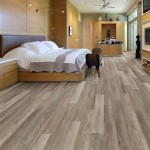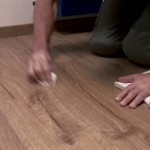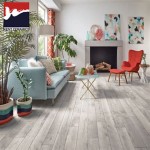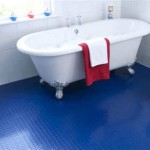```html
Timborana Hardwood Flooring: A Comprehensive Guide
Timborana, scientifically known as *Apeiba petoumo*, is a hardwood species originating from South America, primarily found in Brazil. Its popularity as a flooring material has grown significantly due to its unique aesthetic qualities, durability, and relative affordability compared to some other exotic hardwoods. Understanding the characteristics, benefits, and drawbacks of Timborana is crucial for homeowners and builders considering it for their flooring needs. This article provides a comprehensive overview of Timborana hardwood flooring, covering its properties, advantages, installation considerations, maintenance, and potential drawbacks.
Timborana wood is characterized by its light to medium reddish-brown heartwood, often exhibiting subtle variations in color. The sapwood, which is the outer layer of the tree, is typically lighter in color, almost yellowish. However, during the manufacturing process, the sapwood is usually removed, ensuring a consistent color throughout the flooring. The grain pattern of Timborana is generally straight and uniform, contributing to its clean and modern look. It often features subtle figuring and occasional knots, adding character without being overly busy. The texture is moderately coarse, providing a comfortable feel underfoot. Timborana has a Janka hardness rating of approximately 800-900, placing it within a moderate range of hardness compared to other hardwoods. This hardness makes it suitable for residential applications and light commercial areas.
Understanding the Advantages of Timborana Hardwood Flooring
Timborana hardwood flooring offers several compelling advantages. One of the key benefits is its aesthetic appeal. The warm, reddish-brown tones and consistent grain pattern create a visually pleasing and inviting atmosphere. Its neutral color palette complements a wide range of interior design styles, from traditional to contemporary. This versatility makes it an excellent choice for homeowners seeking a flooring option that seamlessly integrates with their existing decor.
Another significant advantage is its affordability. Compared to other exotic hardwoods like Brazilian Cherry or Ipe, Timborana is typically more budget-friendly. This makes it an attractive option for homeowners who desire the look and feel of hardwood flooring without the premium price tag. The combination of aesthetic appeal and affordability contributes to its growing popularity.
Moreover, Timborana offers reasonable durability for residential use. With a Janka hardness rating in the mid-range, it can withstand everyday foot traffic and resist dents and scratches better than softer wood species like pine. However, it is important to note that it is not as resistant to wear and tear as harder woods, warranting careful maintenance and protection in high-traffic areas.
Installation Considerations for Timborana Flooring
The installation process for Timborana hardwood flooring is similar to that of other hardwood species. It can be installed using various methods, including nailing, gluing, or floating. The choice of installation method depends on the subfloor type, the homeowner's preferences, and the specific requirements of the flooring product. A solid wood Timborana floor, for example, often necessitates nailing or gluing to the subfloor. Engineered Timborana, on the other hand, can sometimes be installed as a floating floor, depending on the manufacturer's specifications.
Before installation, it is crucial to ensure that the subfloor is level, clean, and dry. Any imperfections in the subfloor can translate to unevenness in the finished floor, compromising its aesthetic appeal and structural integrity. Acclimation is also a critical step. Timborana, like all hardwood flooring, needs to acclimate to the ambient humidity and temperature conditions of the installation environment. This process typically involves storing the flooring in the room where it will be installed for several days before commencing the installation. This allows the wood to adjust to the environment, minimizing the risk of expansion or contraction after installation.
Professional installation is generally recommended for Timborana hardwood flooring. Experienced installers possess the necessary skills and tools to ensure a proper and long-lasting installation. They also understand the nuances of working with hardwood flooring and can address any challenges that may arise during the installation process. While DIY installation is possible, it can be challenging for those without prior experience, potentially leading to costly mistakes.
Maintaining and Protecting Timborana Hardwood Floors
Proper maintenance is essential for preserving the beauty and longevity of Timborana hardwood flooring. Regular cleaning is crucial for removing dirt, dust, and debris that can scratch or dull the finish. Sweeping or vacuuming the floor regularly is recommended, followed by occasional damp mopping with a pH-neutral wood floor cleaner. Avoid using excessive water when mopping, as this can damage the wood. Microfiber mops are a good choice for efficient and gentle cleaning.
Protecting the floor from scratches and dents is also paramount. Placing felt pads under furniture legs can prevent scratches from moving furniture. Area rugs in high-traffic areas can provide an additional layer of protection. Avoid wearing shoes with hard soles or heels indoors, as these can damage the floor. Promptly clean up spills to prevent staining or water damage. Timborana, while relatively durable, is still susceptible to damage from moisture and harsh chemicals.
Refinishing is an option for restoring the appearance of Timborana hardwood flooring that has become worn or damaged over time. Refinishing involves sanding down the existing finish and applying a new coat of sealant. This can effectively remove scratches, dents, and other imperfections, giving the floor a fresh new look. The frequency of refinishing depends on the level of foot traffic and the overall condition of the floor. Generally, hardwood floors can be refinished several times throughout their lifespan.
Consider the use of floor mats at entrances to trap dirt and debris before they are tracked onto the flooring. This simple measure can significantly reduce the amount of wear and tear on the floor and minimize the need for frequent cleaning. Regularly inspect the floor for any signs of damage, such as scratches, dents, or water stains. Addressing these issues promptly can prevent them from escalating into more serious problems.
Exposure to direct sunlight can cause Timborana hardwood flooring to fade or change color over time. Using window treatments, such as curtains or blinds, can help to mitigate this effect. Rotating area rugs periodically can also prevent uneven fading.
When choosing cleaning products, avoid those that contain harsh chemicals, abrasives, or waxes. These can damage the finish and leave a dull residue. Opt for wood floor cleaners that are specifically formulated for hardwood floors. Read the product instructions carefully before applying any cleaning product to the floor.
Consider having the floor professionally cleaned and maintained on a regular basis. Professional cleaning services have the expertise and equipment to thoroughly clean and protect hardwood floors.
Humidity levels can also impact the condition of Timborana hardwood flooring. Maintaining a consistent humidity level in the home can help to prevent the wood from expanding or contracting excessively. Using a humidifier or dehumidifier can help to regulate humidity levels, especially during periods of extreme weather.
Timborana is less resistant to insect damage than some other hardwood species, however, this is generally addressed during the milling process through kiln drying and potential treatments. Nonetheless, regular pest control measures are recommended to protect the flooring from potential insect infestations.
Addressing Potential Drawbacks of Timborana Flooring
While Timborana offers several advantages, it is important to acknowledge its potential drawbacks. Its hardness rating, while adequate for residential use, is not as high as some other hardwood species. This means that it is more susceptible to dents and scratches compared to harder woods like Brazilian Cherry or Hickory. Therefore, extra care is needed to protect the floor from damage, especially in high-traffic areas or homes with pets.
Another potential drawback is its susceptibility to moisture damage. Timborana is not as water-resistant as some other wood species, making it unsuitable for use in areas with high humidity or moisture exposure, such as bathrooms or laundry rooms. Spills should be cleaned up promptly to prevent water damage, and precautions should be taken to protect the floor from excessive moisture.
The availability of Timborana may also be a concern in some regions. It is not as widely available as some other common hardwood species, which can make it more difficult to source and potentially more expensive. It is important to research local suppliers and compare prices before making a purchase. While it's often more affordable than premium exotics, availability can fluctuate, impacting its price point.
Ethical sourcing is also a consideration when purchasing Timborana. Ensuring that the wood is harvested from sustainably managed forests is crucial for protecting the environment. Look for certifications, such as the Forest Stewardship Council (FSC), to verify that the wood is sourced responsibly. Supporting sustainable forestry practices helps to ensure the long-term availability of Timborana and other valuable wood species.
Color variation, although generally subtle, can occur in Timborana hardwood flooring. While the overall color is typically consistent, there may be slight differences in shade or grain pattern between individual boards. This is a natural characteristic of wood and can add to its unique appeal. However, some homeowners may prefer a more uniform look.
Over time, like all wood floors, Timborana may exhibit some fading due to exposure to sunlight. Using window coverings and rotating area rugs can help to minimize this effect. However, it is important to be aware that some degree of fading is inevitable.
The cost of finishing and installation can add to the overall expense of Timborana hardwood flooring. Professional installation is generally recommended, and the cost of labor can vary depending on the location and the complexity of the installation. Similarly, the cost of finishing the floor can also vary depending on the type of finish used and the number of coats applied.
While Timborana is a relatively stable wood, it can still be affected by changes in humidity. Excessive changes in humidity can cause the wood to expand or contract, potentially leading to gaps between boards or cupping. Maintaining a consistent humidity level in the home can help to prevent these issues.
Ultimately, understanding the potential drawbacks of Timborana hardwood flooring is essential for making an informed decision. Weighing the advantages against the disadvantages can help homeowners determine whether this flooring option is the right choice for their needs and budget.
```
Timborana Brazilian Oak Hardwood Flooring Spotlight Elemental Hardwoods

Timborana Unfinished Mixed Grain Select Better 3 4 X 1 7

Timborana Prefinished Hardwood Flooring The Fantastic Floor

Timborana Brazilian Pearwood Elemental Hardwoods

Timborana Brazilian Oak Hardwood Flooring Spotlight

Timborana Prefinished Hardwood Flooring The Fantastic Floor

Indusparquet Timborana 6 1 4 5 16 Engineered Pfengtb6 Hardwood Flooring Laminate Floors Ca

Timborana Prefinished Hardwood Flooring The Fantastic Floor

Timborana Natural

Timborana Unfinished Mixed Grain Select Better 3 4 X 1 7
Related Posts








